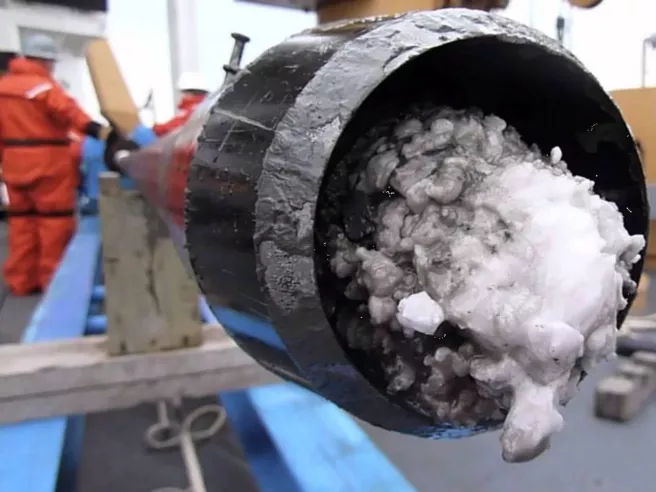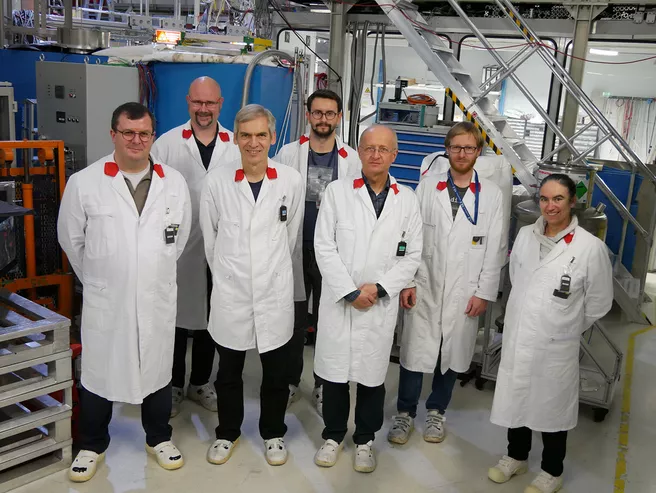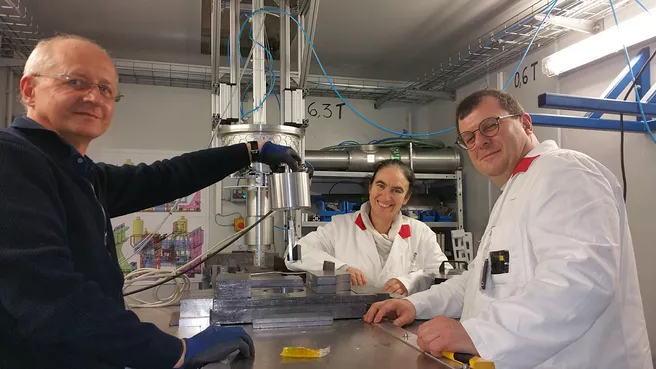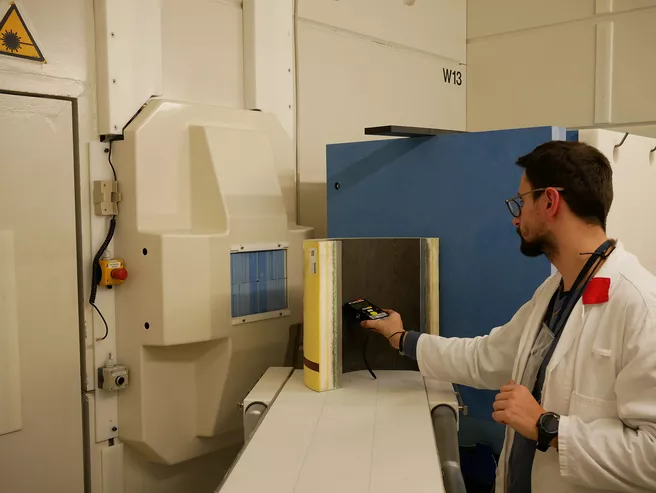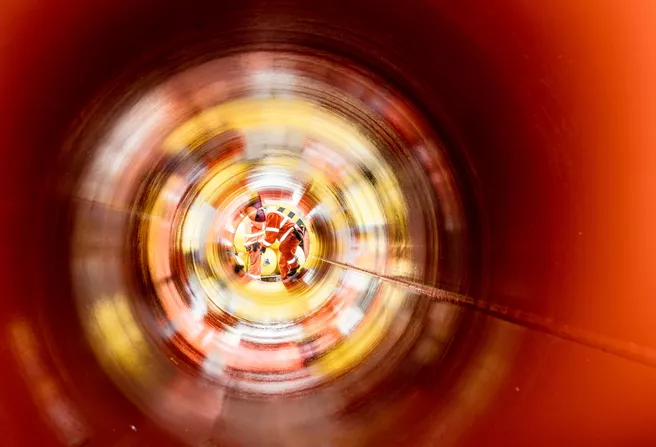Previous approaches do not work underwater
For a clog to be remediated in-situ, the affected section of the pipeline must first be found. Localizing clogs from the outside is challenging, since they can form anywhere along the length of the pipeline.
To date, thermal imaging cameras and gamma rays are used to detect the clogs. However, neither of these methods works underwater. Ultrasound, on the other hand, has no problem penetrating water, but the hydrate blocks can only be detected at close range from outside the pipeline wall.
This constraint poses practical difficulties because underwater pipelines are laid at depths of up to 2000 meters and are often naturally covered by seabed materials like sand or silt. Another technical challenge associated with acoustic methods arises from the lack of a clear difference between the acoustic impedances of the hydrate phase and other phases of the crude oil mixture, which makes discrimination difficult.
Neutrons – the perfect probe
TechnipFMC, a company with around 20,000 employees worldwide that specializes in subsea pipelines, was “looking for a more efficient method to find the plugs in a non-contact, non-destructive and reliable way despite thick walls,” says Dr. Xavier Sebastian, a project manager at the company.
As suggested by Dr. Sophie Bouat, CEO of Science-S.A.V.E.D. (Scientific Analysis Vitalises Enterprise Development), “neutrons are the perfect probe for the task at hand.” She established the contact to the scientists at the Heinz Maier-Leibnitz Center in Garching near Munich.
“Using prompt gamma neutron activation analysis, light atoms and hydrogen in particular can be detected very precisely,” she continues. Since the hydrogen content of hydrates and normal oil or gas is considerably different, it should be possible to detect blockages by measuring the hydrogen concentration.
Feasibility study at FRM II
Dr. Ralph Gilles industry coordinator at the Research Neutron Source FRM II carried out a feasibility study on this topic together with other colleagues from the Technical University of Munich and the Forschungszentrum Jülich. Using the PGAA (Prompt Gamma Activation Analysis) instrument, which utilizes cold neutrons from FRM II, the researchers established that this approach can be used to differentiate between oil and gas and the blockage.
At the NECTAR radiography and tomography facility and the FaNGAS (fast neutron-induced gamma ray spectroscopy) instrument they used fast neutrons from FRM II to show that a sufficiently large number of neutrons penetrate the metal walls of the pipelines to facilitate the respective measurement, and that the measurement also works well underwater.
A small neutron source detects plugs
The results clearly demonstrate that neutrons are ideally suited for this application. Moreover, “our experiments have shown that we can even distinguish an incipient blockage from a fully developed one,” says Dr. Ralph Gilles. “That’s very beneficial, because then one can even preventatively heat a pipe segment to melt the blockage before it fully develops.”
In practice, a mobile detector with a small neutron source will move back and forth along the pipeline to look for plugs. “We are very pleased that, with the help of the measurements at the research neutron source, we have now found an efficient method that makes it much easier to detect these plugs in the future,” says Dr. Xavier Sebastian.
Original publication:
Sophie Bouat, Ludovic Pinier, Xavier Sebastian, Adrian Losko, Rudolf Schütz, Michael Schulz, Zsolt Revay, Zeljko Ilic, Eric Mauerhofer, Thomas Brückel & Ralph Gilles
Detection of hydrate plugs inside submarine pipelines using neutrons,
Nondestructive Testing and Evaluation (2021) DOI: 10.1080/10589759.2021.1990284
More information:
An der Analyse waren neben Wissenschaftlern der Technischen Universität München auch Forscher des Forschungszentrums Jülich und der RWTH Aachen beteiligt. Der Kontakt zur Firma TechnipFMC wurde durch das Unternehmen Science-S.A.V.E.D vermittelt. (Scientific Analysis Vitalises Enterprise Development). TechnipFMC finanzierte die Strahlzeit am FRM II.
Contact:
Dr. habil. Ralph Gilles
Industry coordinator
Forschungs-Neutronenquelle
Heinz Maier-Leibnitz (FRM II)
Technical University of Munich
Lichtenbergstr. 1
85748 Garching
Phone: +49 89 289-14665
E-Mail: ralph.gilles(at)frm2.tum.de
